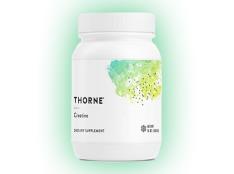
Have you found yourself confused when reading food labels at the grocery store? Heres a glossary of frequently used terms.
A
Added: an acceptable synonym for "more," but the addition must alter the food.
B
Best if Used By Date: It is recommended that a food be used by this date for optimal quality. Depending on the food, it may still besafe to eat after this date.
C
Calorie-free: Less than five calories per serving size or RACC.
Cholesterol-free: The food contains less than 2 milligrams of cholesterol and 2 grams or less of saturated fat per serving.
Contains a small amount of: An acceptable synonym for "low in".
Contains sulfites: Listed on the labels of beer and wine for people who are sensitive to sulfites.
More: 7 Foods to Lower Cholesterol and Protect Your Heart
D
Daily Value (DV): A Daily Value is the daily nutrient requirement for the average consumer. Daily Values are based on a 2,000 calorie diet and indicate the amount of each nutrient in a single serving of the food relative to what the FDA has determined to be the recommended Daily Value.
E
Enriched: The addition of nutrients in order to replace vitamins or minerals that have been removed during the food manufacturing process.
Excellent Source of: Contains 20 percent or more of the DV per serving or RACC for the indicated nutrient. May also be used on meals or main dishes to indicate that the product contains enough of a particular nutrient to meet the definition.
Extra: An acceptable synonym for "more," but the addition must alter the food.
Extra-lean: May be used on seafood or game meat products that contain less than 5 grams total fat, less than 2 grams saturated fat and less than 95 milligrams cholesterol per serving size or RACC, and on meals or main dishes that meet these criteria per 100 grams or per labeled serving.
F
Fat-free: A fat–free food must have less than 0.5 grams of fat per serving.
Few: An acceptable synonym for "low in".
Fewer: An acceptable synonym for "less than".
Fortified: A food that is "fortified" is used as a vehicle to get under-consumed nutrients into the food supply. Fortification is the process by which nutrients and minerals are added to a food that never had them to begin with.
Free: Synonymous with no, without, and zero. The product contains none (or only a trivial or physiologically inconsequential amount) of one or more of these components: fat, saturated fat, cholesterol, sodium, sugars and calories. Other terms might be trivial source of, negligible source of, dietary insignificant source of, non-(for non-fat only)
Fresh: Any raw or unprocessed food is considered fresh. This term can be used only for a food that is raw, has never been frozen or heated, and contains no preservatives (irradiation at low levels is allowed).
Fresh frozen: Or "frozen fresh" and "freshly frozen" can be used for foods that are quickly frozen while still fresh. Blanching (brief scalding before freezing to prevent nutrient breakdown) is allowed.
More: How to Add Frozen Fruits and Veggies to Every Meal
G
Good source: One serving contains or provides 10 to 19 percent of the DV per serving size or RACC for the indicated nutrient. The term may be also used on meals or main dishes to indicate that the product contains a enough of a particular nutrient to meet the definition.
H
Health related terms ("health," "healthful," "healthfully," "healthfulness," "healthier," "healthiest," "healthily" and "healthiness"): When you see the term "healthy" on the label you can have a certain level of confidence that the food meets the requirements listed below. Even if the word "healthy" appears only in the name of the product (such as Healthy Choice), it must meet these requirements.
- Total fat = 3 grams or less per serving/RACC; for meals and main dishes, 3 grams or less per 100 grams and not more than 30 percent of calories from fat.
- Saturated fat = 1 gram or less per serving/RACC and 15 percent or less calories from saturated fat; for meals and main dishes, 1 gram or less per 100 grams and less than 10 percent of calories from saturated fat.
- Sodium = 480 milligrams or less per serving/RACC; for meals and main dishes 600 milligrams or less.
- Cholesterol = 60 milligrams or less per serving/RACC; for meals and main dishes 90 milligrams or less.
- Beneficial nutrients = Contains at least 10 percent of Daily Value per serving/RACC for vitamins A, C, calcium, iron, protein or fiber (there is an exception for raw and canned fruits and vegetables).
"High in" or "Excellent Source Of": Synonymous with rich in. The food contains 20 percent or more of the Daily Value per serving for a particular nutrient.
Homogenized: This is a process used to break up and separate the fat in milk in order to give it a smooth and uniform texture.
- 1
- of
- 3







Discuss This Article